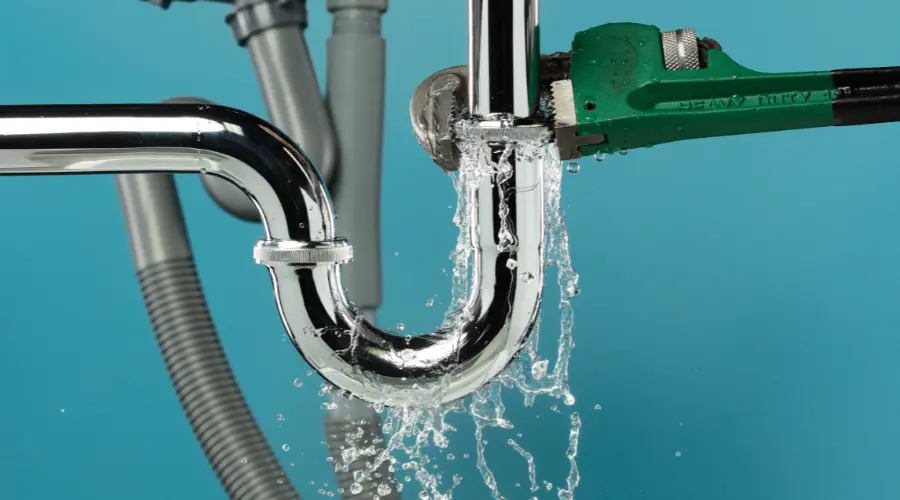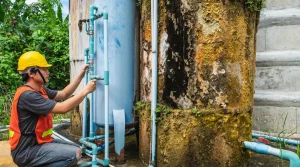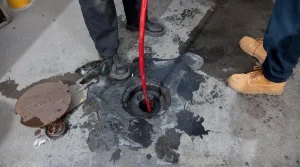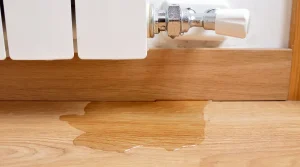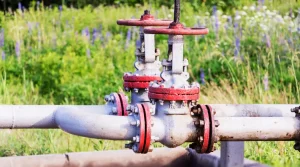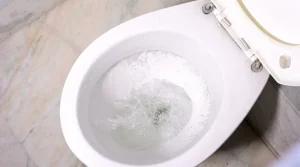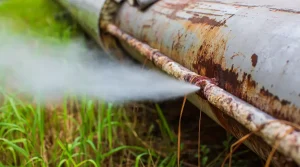Water leaks, especially hidden ones, can cause significant structural damage and health risks if not addressed promptly. Understanding how to detect these leaks early is essential for maintaining a safe and healthy home environment.
Key Takeaways
- Early Detection is Crucial: Identifying water leaks promptly can prevent extensive damage and costly repairs.
- Recognize the Signs: Be vigilant for indicators such as increased water bills, damp spots, and mold growth.
- Utilize Detection Methods: Regularly inspect your water meter, monitor water pressure, and consider professional leak detection services.
How to Detect Water Leakage in a House
Detecting water leaks involves a combination of observation and systematic checks:
- Monitor Your Water Bill: A sudden increase in your water bill may indicate a hidden leak. Compare your current bill to past ones and note any unusual rises. Consistent spikes, even small ones, can suggest a problem.
- Check Your Water Meter: Ensure all water sources in your house are off, including irrigation systems, appliances, and faucets. Then, check your water meter. If the meter continues to move despite all water sources being off, you might have a leak.
- Inspect Your Home’s Exterior: Examine the foundation of your home for pooling water, damp soil, or unusual vegetation growth. These signs could indicate a leak in your outdoor plumbing or irrigation system.
- Review Your Home’s Water Pressure: Low water pressure can sometimes signal a hidden leak. If you experience a noticeable drop in water pressure, it may be worth investigating further.
How to Diagnose a Hidden Water Leak
Diagnosing hidden water leaks involves targeted testing and careful observation:
- Use a Moisture Meter: A moisture meter can detect the moisture content in materials such as walls and floors. Higher moisture readings in areas not typically exposed to water may indicate a hidden leak.
- Conduct a Leak Detection Test: Turn off all water appliances and record the current reading on your water meter. After several hours, recheck the meter. A change in the reading suggests that a leak might be present.
- Perform a Dye Test: Place a few drops of food coloring in the tank of your toilet and wait 30 minutes without flushing. If the colored water appears in the bowl, it indicates a leak in the toilet’s flapper or other internal parts.
- Inspect Pipes and Appliances: Look for visible signs of moisture or corrosion on pipes, appliances, and fixtures. Leaky faucets, hoses, or connections can point to more significant plumbing issues.
14 Signs You Might Have a Hidden Water Leak
- Musty Odors: Persistent musty smells, particularly in basements or attics, can indicate hidden mold due to prolonged moisture exposure from a leak.
- Discolored Walls or Ceilings: Stains or discoloration on walls or ceilings often indicate water damage. Leaks behind these surfaces can cause such discolorations.
- Peeling Paint or Wallpaper: Bubbling or peeling paint and wallpaper usually result from moisture damage. If you notice these issues, moisture may be seeping into your walls.
- Warped Flooring: Wood or laminate floors that buckle, sag, or warp can indicate water leaking underneath. If not addressed, this can cause significant structural damage.
- Mold Growth: Visible mold on walls, floors, or ceilings strongly indicates moisture problems. Mold thrives in damp conditions, often due to hidden leaks.
- Increased Water Bills: A sudden rise in your water bill might be a clear indicator of a leak. Consistent increases in water usage can suggest a leak somewhere in your system.
- Wet or Damp Spots: Persistent wet spots on floors, walls, or ceilings could mean a hidden leak. These spots often appear in areas where water shouldn’t usually accumulate.
- Unusual Sounds: Gurgling, hissing, or dripping noises from pipes or walls can indicate water leakage within the system. These sounds may be subtle but are worth investigating.
- Cracks in Walls or Foundations: Cracks in walls or foundations may result from water damage and shifting caused by leaks. These cracks can indicate significant underlying problems.
- Flaking or Bubbling Paint: Paint that flakes, bubbles, or peels away from surfaces often indicates moisture trapped behind it. This is a common sign of water infiltration.
- Sagging Ceilings: A ceiling that sags or bulges may be holding water from a hidden leak. If not addressed promptly, this can lead to further structural damage.
- \/Damp Smell: An unusual damp smell in certain areas of your home can indicate concealed moisture, often due to a hidden leak.
- Puddles in Unusual Places: Puddles or wet areas where water shouldn’t be are strong indicators of leaks. These puddles can form due to water escaping from pipes or fixtures.
- Increased Humidity: Hidden water leaks can increase indoor humidity. If you notice a persistent increase in humidity, it might be worth checking for leaks.
Frequently Asked Questions
Q1: How can I detect a hidden water leak in my home?
Detecting hidden water leaks involves monitoring your water bill for unexplained increases, checking your water meter for movement when all water sources are off, inspecting your home’s exterior for signs like pooling water or damp soil, and reviewing your home’s water pressure for unexplained drops.
Q2: What tools can help identify hidden water leaks?
Tools such as moisture meters can detect moisture content in walls and floors. Conducting leak detection tests by monitoring your water meter over a period with all water appliances off can also help. Additionally, performing dye tests in toilet tanks can reveal leaks in toilet components.
Q3: What are common signs of hidden water leaks?
Common signs include musty odors, discolored walls or ceilings, peeling paint or wallpaper, warped flooring, visible mold growth, increased water bills, wet or damp spots, unusual sounds from pipes, cracks in walls or foundations, flaking or bubbling paint, sagging ceilings, damp
Conclucion
Hidden water leaks can cause significant damage to your property and pose health risks if left unaddressed. By staying vigilant and recognizing the signs of a leak, you can prevent costly repairs and maintain a safe living environment. Regular monitoring, timely inspections, and prompt action are essential in minimizing the damaging effects of water leaks. If you suspect a leak, seek professional assistance for accurate detection and resolution. Taking proactive measures is the best way to protect your property and ensure a healthy home. Count on the expert team at BJC Plumber North Bergen for dependable plumbing solutions. Explore our services and book your appointment today!

